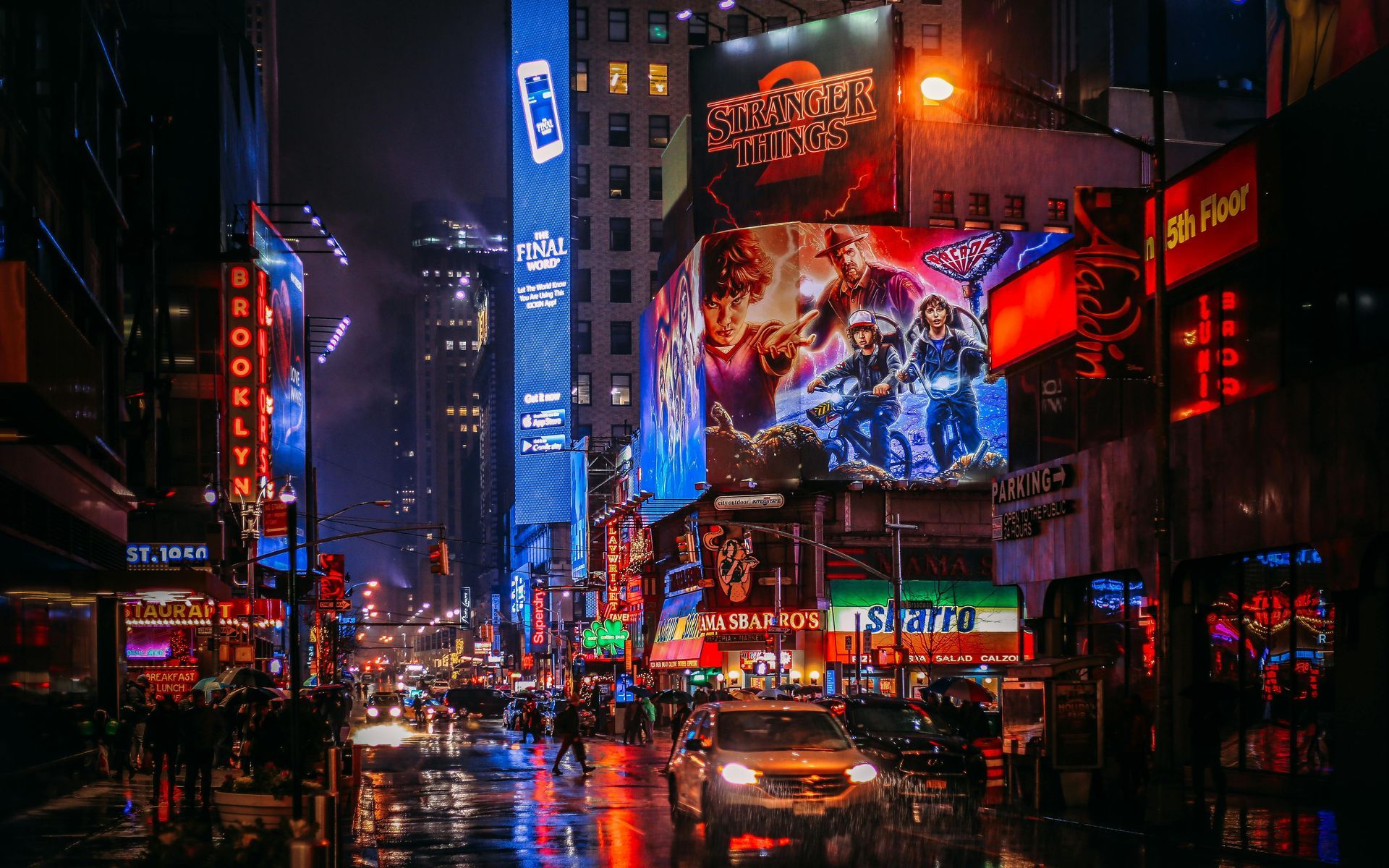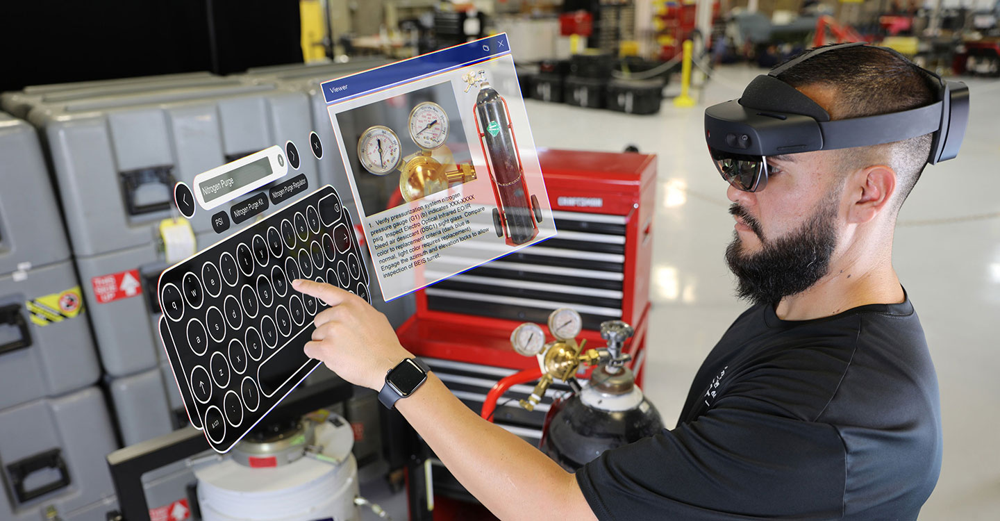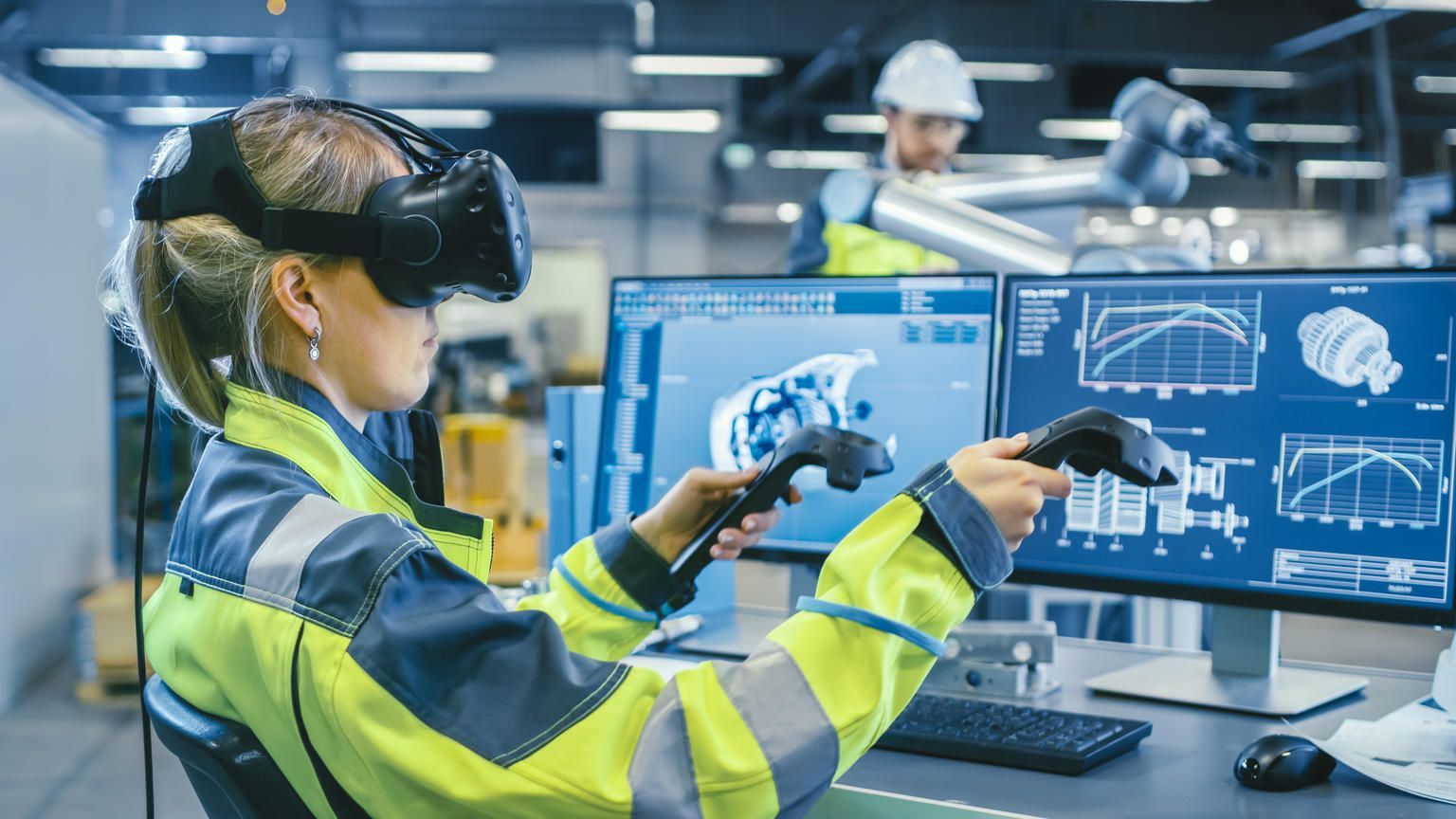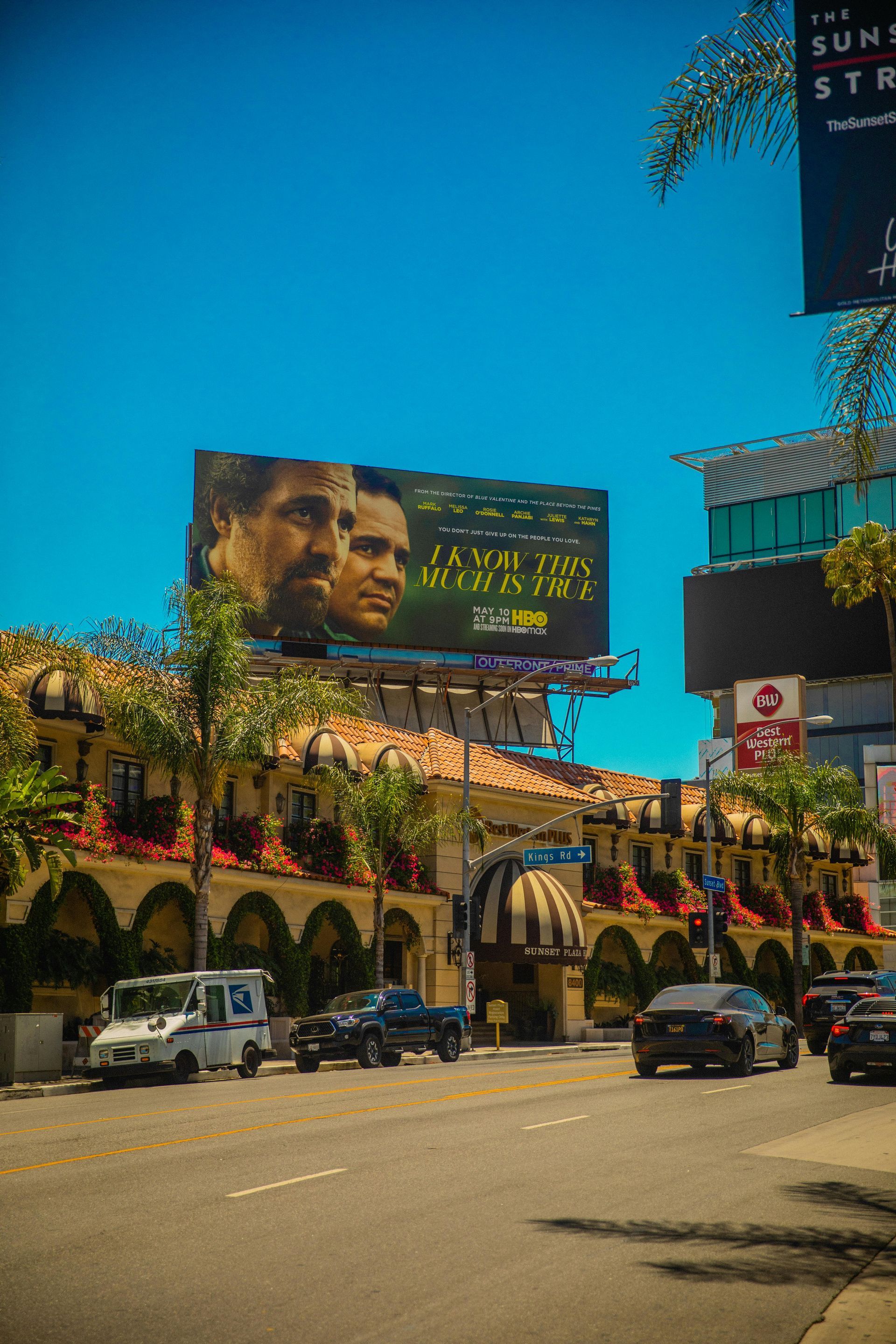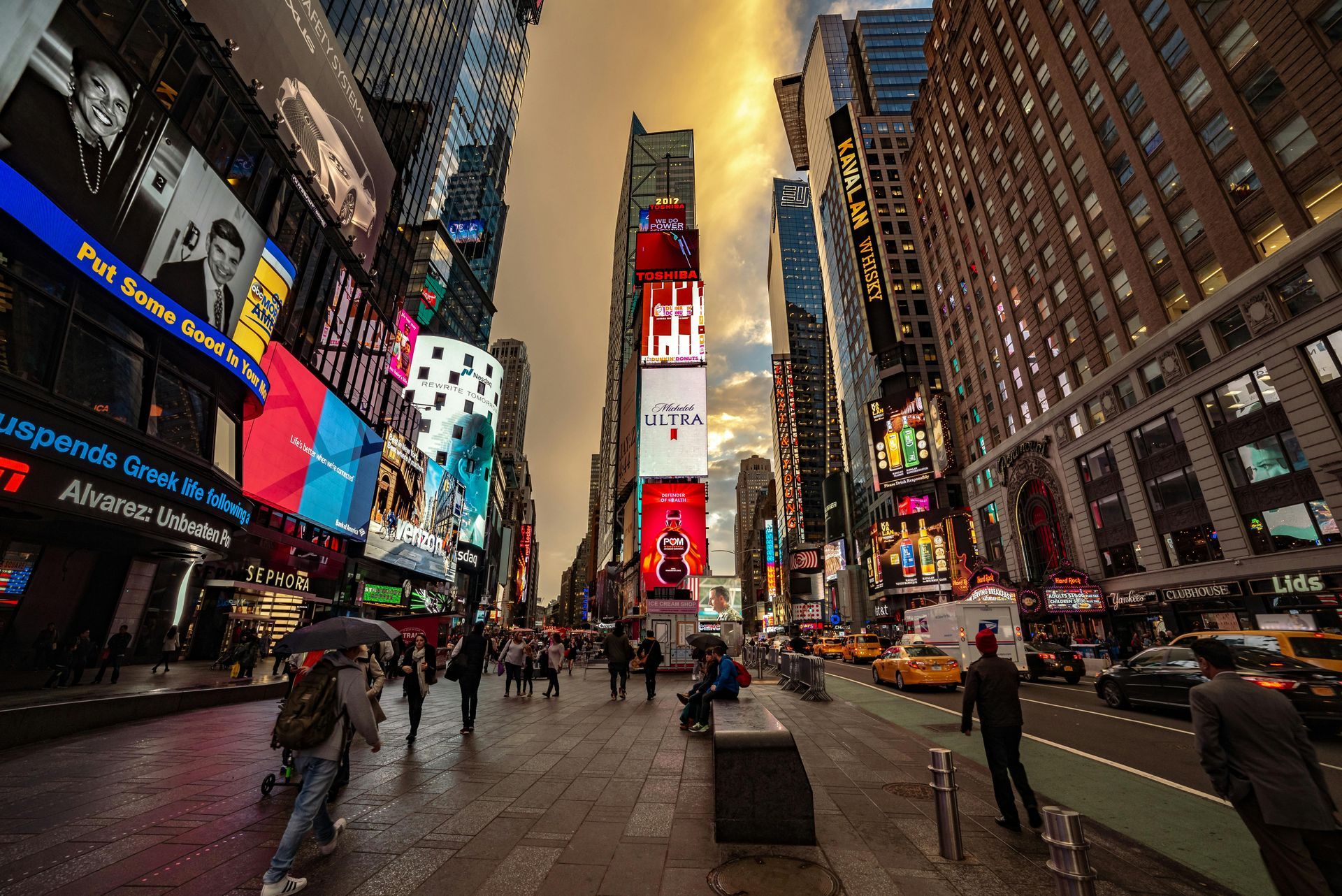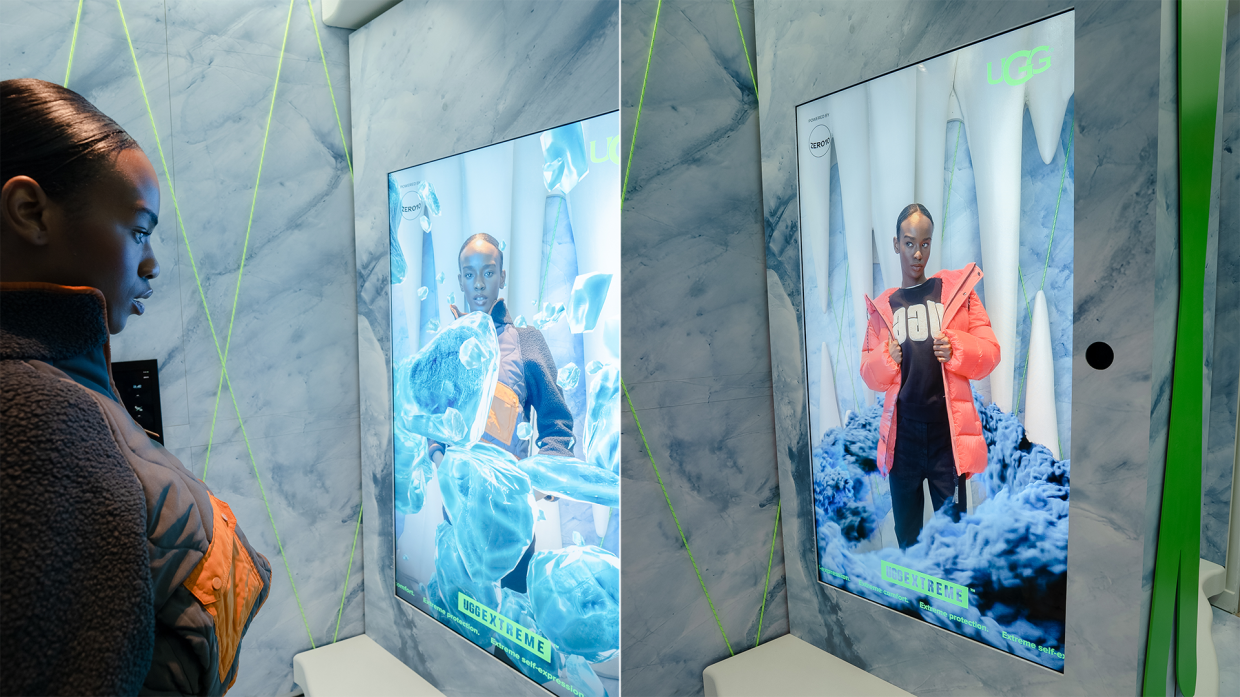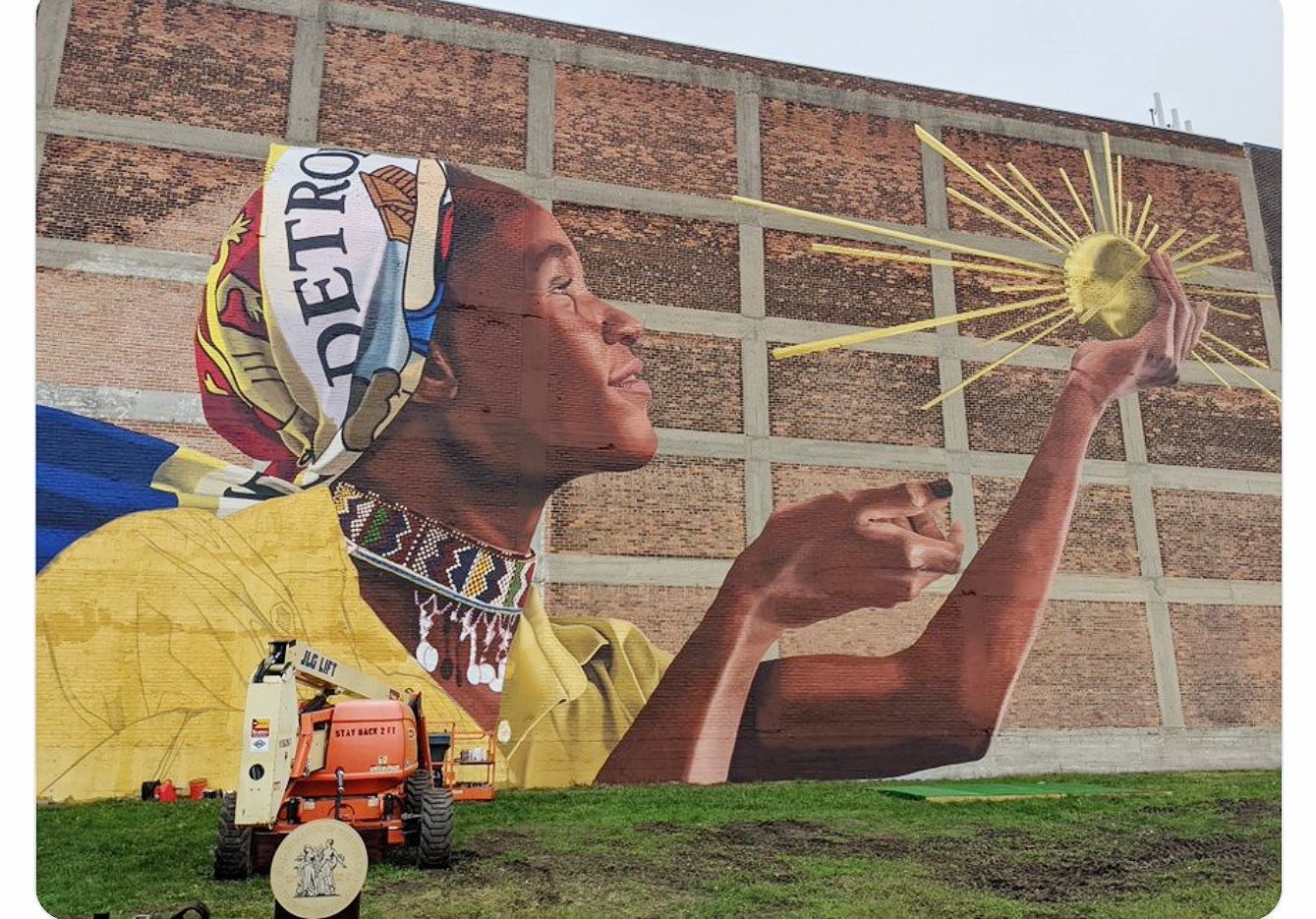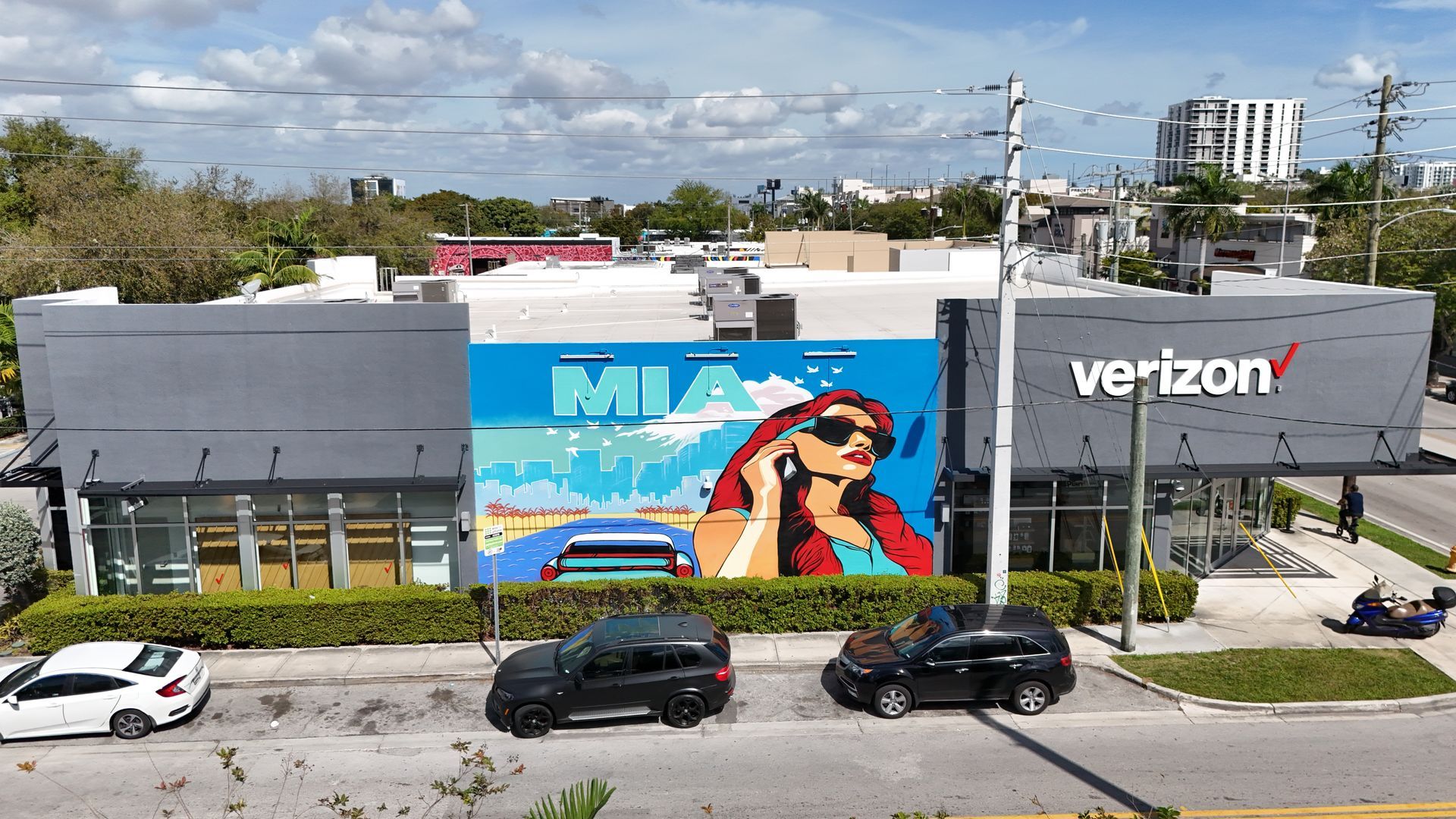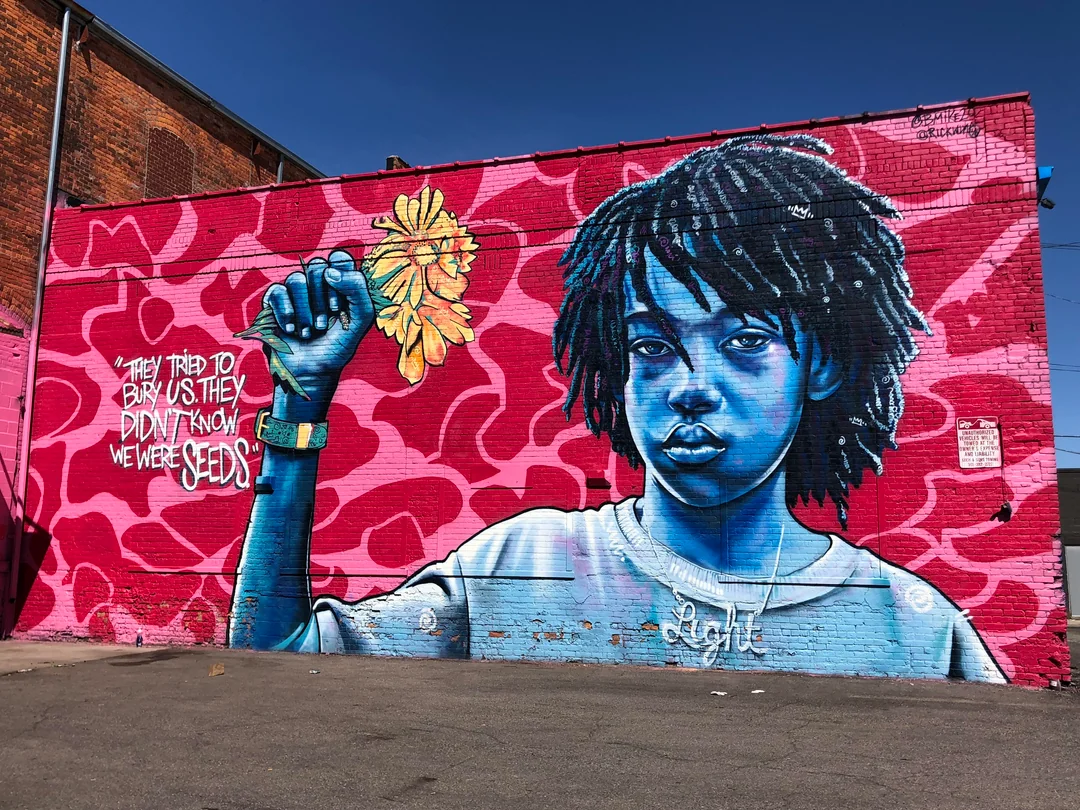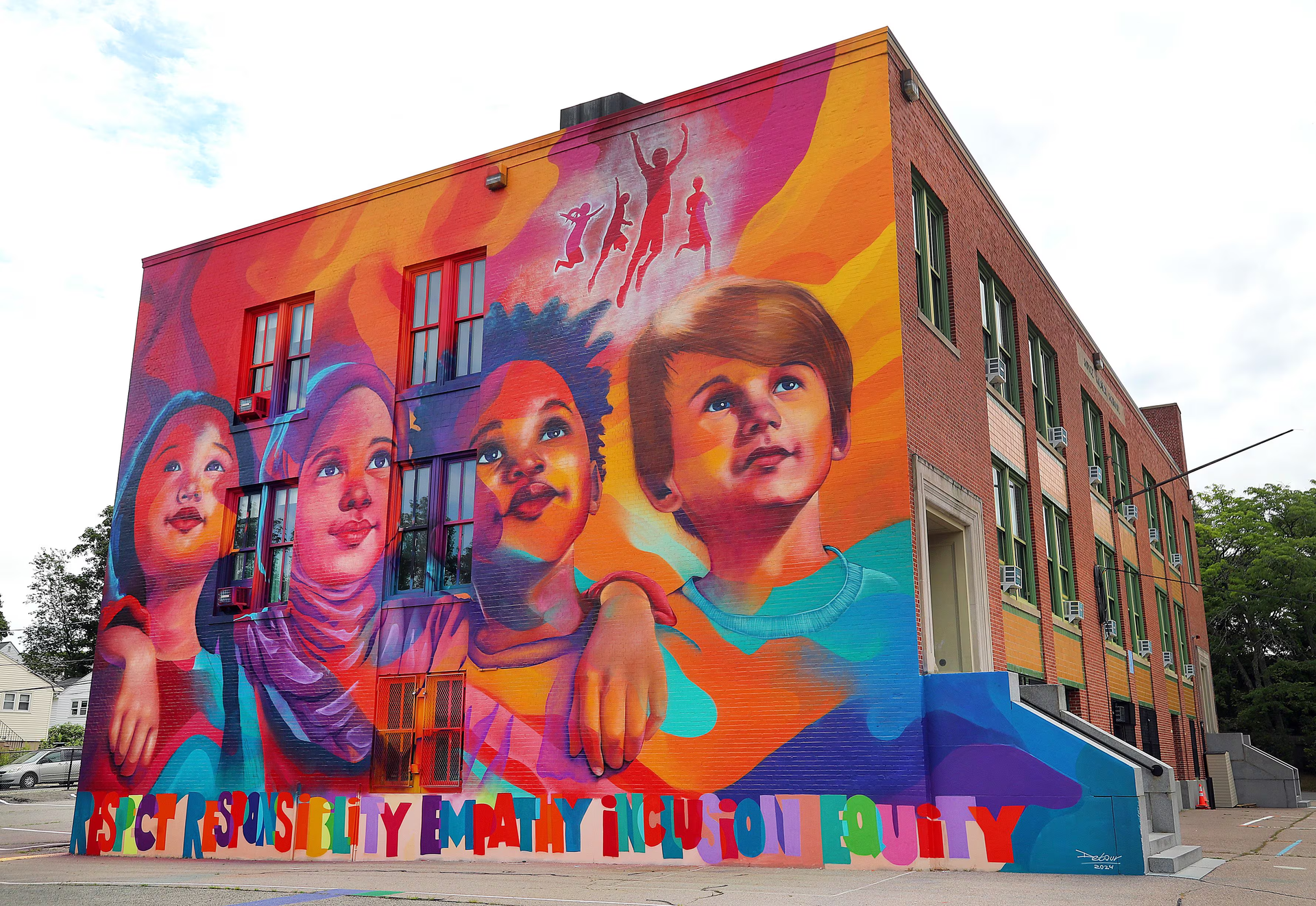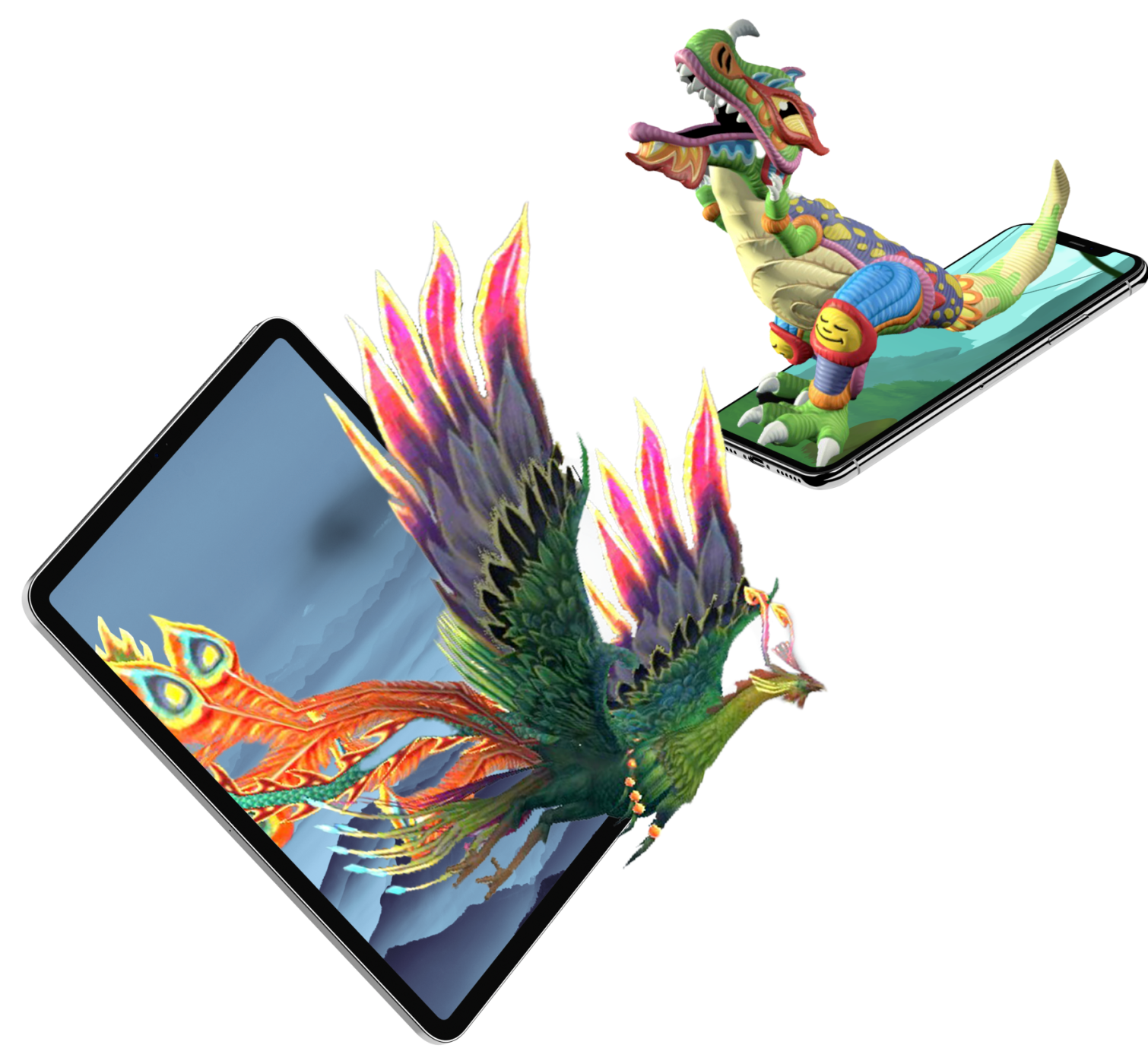AR/VR in Construction: 10 Key Use Cases Transforming the Industry
The construction industry has long wrestled with the classic trifecta: scope, schedule, and costs. As projects grow more complex and clients demand ever-faster turnarounds, contractors must find ways to keep projects on track while staying within budget. Although the industry has seen waves of technological innovation, few have been as game-changing as the rise of augmented reality (AR) and virtual reality (VR).
According to a 2020 study featured in Data, a peer-reviewed, open-access journal, AR/VR usage within the architecture, engineering, and construction (AEC) industry is rising annually. While AR and VR will never replace sound design, good communication, and robust management practices, they can function as powerful enablers. They allow teams to collaborate in immersive environments, spot issues before they become costly rework, and align stakeholder expectations early and often.
As Josh Rodgers, Integrated Construction Manager at Mortenson, explains:
“Technology is also not a problem solver in and of itself. You need first to identify which problems you’re struggling with and what type of technology investment will help you improve your daily work. Virtual reality isn’t a substitution for good design and construction, but it’s a valuable tool in our tool kit.”
Below, we’ll look at 10 key use cases where AR/VR is transforming the construction industry, helping contractors tackle communication challenges, better justify design decisions, improve training programs, and more—ultimately giving them something close to that coveted “crystal ball” that predicts the future.
1. Design Justification and Stakeholder Buy-In
The Challenge:
When new buildings are proposed, architects and contractors often have to justify design decisions to city officials and community stakeholders. Sometimes, two-dimensional renderings or CAD drawings aren’t enough for non-technical audiences to visualize how a new building will fit into the surrounding environment.
How AR/VR Solves It:
Augmented reality overlays 3D models onto existing physical spaces, making it possible to perform a real-time site walk and view a proposed building’s size, scale, and aesthetics in context. This ensures that all stakeholders—clients, municipalities, and community members—can see exactly how a building will look once constructed.
A compelling example comes from Valerio Dewalt Train, an architecture and design firm that used AR to justify a 36-story tower in Denver. They wanted to show how the structure would blend seamlessly into the skyline. Adam Farooq, Marketing Director and Lead XR Developer at Valerio Dewalt Train, recalls:
“The first time I opened up Unity Reflect Review to get the 1:1 experience of the tower, it was breathtaking. Your eyes light up the first time you do it. Having that perspective on the ground and looking up, knowing that’s the view most people in Denver will see, is special.”
With AR, Valerio Dewalt Train could iterate more quickly, communicate changes in real time, and reduce rework. Questions from city officials and community members were addressed far more efficiently than in traditional, meeting-heavy processes.
2. Real-Time Communication and Collaboration
The Challenge:
Across construction projects, communication breakdowns are alarmingly common. A survey by the Fails Management Institute (FMI) and PlanGrid of over 600 construction leaders found that $177.5 billion is spent each year in the United States fixing construction mistakes and managing conflict. Of this, $31 billion is attributed directly to rework caused by miscommunication.
More meetings or longer email chains rarely solve communication challenges. They can create additional layers of complexity, wasting valuable time that could be better spent moving the project forward.
How AR/VR Solves It:
VR and AR facilitate immersive collaboration, allowing participants to engage with 3D models of a project as though they’re physically walking through the space. Remote stakeholders can “meet” inside a shared virtual environment, see the exact same model simultaneously, and annotate or mark up issues in real time.
Saeed Eslami, founder of VisualLive and head of the AEC industry vertical at Unity Technologies, points out:
“When I worked for Hensel Phelps, we used to have meetings almost every day. We spent hours doing this to try to avoid miscommunication, but those meetings were the enemy of our schedules and budgets.”
Through a virtual model, teams can spot design conflicts, clarify details, and discuss solutions instantly—no need for endless back-and-forth phone calls or emails. Josh Cheney, Senior Manager of Strategic Alliances at Autodesk, has seen this firsthand:
“Watching team members tweak the design and take notes on it in real time was incredible.”
3. Reducing Rework and Misunderstanding
The Challenge:
Rework is one of the most notorious budget drains in construction. Rework leads to schedule overruns and additional costs, Whether because of an overlooked design conflict or an unanticipated site condition. Misunderstandings between architects, engineers, trades, and owners often accelerate the need for corrections partway through a project.
How AR/VR Solves It:
By immersing project teams in a digital twin of the project, before construction begins, AR/VR helps reveal conflicts and potential mistakes at a stage when they’re infinitely cheaper to fix. If the plumbing layout clashes with the HVAC ductwork, or if an interior finish doesn’t meet a specific fire code requirement, these issues can be identified in a virtual model rather than after physical materials have been installed.
Using AR headsets on-site can let teams overlay digital models onto physical spaces. This quick side-by-side comparison ensures that what’s built matches the approved design, reducing the chance of compounding mistakes.
4. Faster, More Effective Training
The Challenge:
Finding the right talent is only half the battle in today’s labor market. Once hired, workers often need training or at least job-specific onboarding.
Construction sites pose various unique risks, and employees must be aware of hazards before stepping onto the job site. Traditional training or orientation sessions can be time-consuming and are sometimes hard to scale effectively.
How AR/VR Solves It:
VR simulations offer safe, immersive training environments where new (and seasoned) workers can learn about job-specific dangers and protocols without risking injury. By replicating real-world site conditions in a virtual space, trainees can practice operating machinery or navigating hazards under realistic conditions—yet still at zero risk.
Josh Rodgers at Mortenson sees this as a huge advantage:
“We don’t want to go out there winging it. We want to know what to expect. If we can help them be prepared with quick, effective training on what will happen on the job site, then that makes their work a lot easier.”
This also benefits remote education initiatives: training modules can be shared via VR headsets across multiple locations, so workers arrive at the job site already familiar with layout and safety procedures.
5. Enhanced Safety Protocols
The Challenge:
Construction ranks among the most hazardous industries. Job sites are constantly changing, and it’s challenging for safety managers to stay on top of every risk in real time. A simple oversight—like a missing guardrail or an exposed electrical wire—can lead to severe injury or worse.
How AR/VR Solves It:
In addition to training, AR can be leveraged on the job site to highlight dangerous zones and detect anomalies before anyone gets hurt. For instance, workers wearing an AR headset can receive real-time safety alerts or see a visual overlay showing critical areas to avoid. VR-based “hazard recognition” modules allow teams to experience near-miss events virtually, making them better prepared to respond if such situations arise on a real site.
By reducing the frequency of accidents, companies save on lost productivity, medical expenses, and potential regulatory fines while maintaining a safer, more positive work environment.
6. Improved Client Presentations
The Challenge:
Owners and developers increasingly expect hyper-detailed, high-fidelity visualizations before approving designs or granting funding. Gone are the days when a few static 2D drawings would suffice to communicate a million-dollar construction project. Clients want more transparency, deeper collaboration, and the ability to understand exactly what they’ll be getting.
How AR/VR Solves It:
AR/VR experiences allow contractors and designers to give clients a walkthrough of their building—before a single beam is erected. As Will Adams, VR Developer at Mortenson, explains:
“Typically, that part of the design lags. But virtual reality using Unity Technologies and Oculus Quest headsets allowed us to facilitate many people in the space at the same time to make sure expectations were aligned. It’s fully networked, so anybody with a headset can see the other people in the room.”
These virtual walkthroughs help secure stakeholder approvals faster by offering an experiential sense of space. Questions about layout, furniture placement, or equipment footprints can be answered immediately, saving time and ensuring fewer revisions down the line.
7. Accurate Equipment and Layout Planning
The Challenge:
Large, complex facilities—such as hospitals, factories, or microchip plants—feature miles of piping and complex mechanical, electrical, and plumbing (MEP) layouts. Mistakes in design or installation can lead to catastrophic cost overruns and operational issues.
How AR/VR Solves It:
Imagine standing in an empty job site but seeing the future mechanical systems superimposed in true-to-life size via AR. Maintenance teams can weigh in early, ensuring clearance for repairs and verifying that the location of critical valves is both code-compliant and serviceable. This “heads-up” approach prevents bottlenecks, especially in tight spaces.
Josh Cheney from Autodesk recounted visiting a microchip-manufacturing plant and using AR/VR:
“It was nearly four times the size of a football field with 24-foot ceilings. We put on headsets to see the real-world space combined with these models. Watching team members tweak the design and take notes on it in real time was incredible.”
By confirming equipment placement virtually, teams can avoid or drastically reduce costly rework once systems are physically installed.
8. Remote Site Inspections and Progress Tracking
The Challenge:
Project managers, clients, or design teams often can’t visit a site regularly—especially if it’s located far away or if health and travel restrictions limit in-person presence. This can create oversight gaps, where potential issues go unnoticed until they become urgent (and expensive).
How AR/VR Solves It:
With AR-enabled mobile devices or VR setups, remote inspections can be conducted in real time. A site superintendent can wear an AR headset and “stream” the site to remote stakeholders, who see the live scene overlaid with the digital model. Stakeholders can point out potential discrepancies, ask questions, or leave notes without needing to coordinate flights or multiple on-site visits.
This approach also helps track construction progress. Comparing the real environment to the as-designed model identifies if construction is behind schedule, if materials are located in the right places, or if certain installations aren’t matching up with the original plan.
9. More Efficient Collaboration with Specialty Trades
The Challenge:
On a large project, countless specialty trades—electrical, plumbing, HVAC, framing, drywall—must work in lockstep. A single design oversight or a late catch in one trade can disrupt everyone else’s timeline.
How AR/VR Solves It:
By bringing specialty contractors into a
shared virtual space to review 3D models, teams can collectively identify potential bottlenecks. If an electrical conduit blocks an essential drainage route, the plumbing and electrical subcontractors can coordinate fixes immediately rather than discovering the conflict months later.
Julien Faure, General Manager of Verticals at Unity Technologies, notes how it “crowdsources the intelligence” of the entire team:
“The technology lets you start seeing the project through other people’s eyes and from the other disciplines’ perspectives, which drives alignment.”
10. Meeting Rising Client Expectations for Speed and Quality
The Challenge:
Client expectations have soared in recent years. They want faster project delivery, strict budget adherence, and no compromise on quality. Simultaneously, end users—whether it’s a hospital staff or a collegiate athletic department—want spaces that meet their functional needs with precision.
How AR/VR Solves It:
AR/VR allows construction teams to work faster and smarter, addressing design, budget, and schedule constraints in near real time. As
Will Adams points out, Mortenson used VR to help align expectations on a university softball project by creating various layouts, ensuring coaches and players had adequate room to swing bats in batting cages. This level of
hyper-collaboration would have been nearly impossible to achieve through standard paper plans.
When it comes to healthcare projects, Mortenson uses VR to simulate operating rooms so surgeons and clinical staff can test layouts. Everything from the angle of overhead lights to the positioning of trays and equipment is previewed virtually, meaning staff can provide feedback immediately. This eliminates the guesswork and delivers final spaces that cater precisely to the end-user needs.
From Crystal Ball to Constructed Reality
In construction, it’s impossible to predict the future with 100% certainty, but AR/VR technologies bring the industry closer than ever to having that elusive crystal ball. By enabling immersive collaboration, bridging the gap between trades, and letting end users experience designs ahead of time, AR/VR boosts efficiency, safety, and overall satisfaction.
As Julien Faure of Unity Technologies puts it:
“VR and AR crowdsource the intelligence that exists across teams that otherwise speak their own languages within their own specialty areas. With the right technology, everyone engaged in the process can understand and take down barriers ahead of time.”
This sentiment is echoed by many who see firsthand how virtual collaboration helps break down silos, unify teams, and deliver results that meet (or exceed) client expectations. By integrating data from multiple systems into a single, robust, 3D environment, AR/VR fosters transparency and insight across the entire project lifecycle.
Putting It All Together: Key Takeaways
- Justify Design Decisions and Win Stakeholder Approval Faster
AR/VR offers a realistic preview of how a new structure will fit into existing surroundings, smoothing the path for official approvals and community acceptance. - Improve Communication and Reduce Conflicts
Visual immersion eliminates guesswork, minimizing the costly rework often caused by miscommunication and outdated 2D documentation. - Enhance Training and Safety
From newcomers to seasoned pros, AR/VR simulates risk scenarios in a controlled setting, boosting on-site safety and reducing on-the-job errors. - Expedite Client Decision-Making
Engaging, interactive VR walkthroughs help clients grasp a project’s design, greatly speeding up approvals and clarifying expectations. - Coordinate Complex MEP Layouts
Overlaying digital models onto physical sites catches clashes before real-world installation, saving both time and money. - Optimize Equipment and Operational Efficiency
Maintenance teams can plan better for upkeep, ensuring accessible layouts for repairs and upgrades. - Leverage Remote Site Inspections
AR/VR solutions help geographically dispersed teams track progress and conduct inspections without significant travel costs or schedule disruptions. - Crowdsource Expertise from Multiple Trades
Immersive environments unite specialties, from electricians to HVAC installers, in a single “room,” eliminating major design or installation conflicts. - Adapt to Evolving Owner Expectations
Today’s stakeholders expect digital-savvy solutions. AR/VR meets that demand by delivering efficient, high-quality results under tighter schedules.
Maintain a Competitive Edge
Embracing immersive technology aligns construction firms with innovation and positions them as leaders in a rapidly evolving industry.
Conclusion: Future-Proofing Construction with AR/VR
The rapid adoption of AR/VR in construction is a testament to how these tools solve long-standing problems around scope, schedule, and budget. They bring new ways of communicating, training, and project validation to life—reducing misalignment and bridging the gap between design intent and on-site reality.
As more construction companies incorporate AR/VR into their workflows, we’ll continue seeing a decline in rework costs, faster project approvals, and improved stakeholder satisfaction. Will Adams summarizes the promise of immersive technologies:
“But virtual reality using Unity Technologies and Oculus Quest headsets allowed us to facilitate many people in the space at the same time to make sure expectations were aligned. It’s fully networked, so anybody with a headset can see the other people in the room.”
The industry has already begun to pivot from traditional, manual processes to digital immersion as its new standard. If you’re in construction and haven’t explored the potential of AR/VR yet, now is the time to take a closer look. These technologies can help safeguard against the unknown—they can also revolutionize how you work, bring projects to life in ways you never thought possible, and strengthen your relationships with clients, stakeholders, and project teams.
By addressing design justification, communication, training, client expectations, and more, AR and VR are proving their value as transformative solutions that bolster construction’s triple constraints—scope, schedule, and cost—and set a new benchmark for success in the industry.
TALK TO A PRO
We're here to bring your brand to life!
Stay Connected with BrandXR
Create Augmented Reality for Free!
Create, Publish, and Measure 3D Augmented Reality Experiences Without Having to Code.
